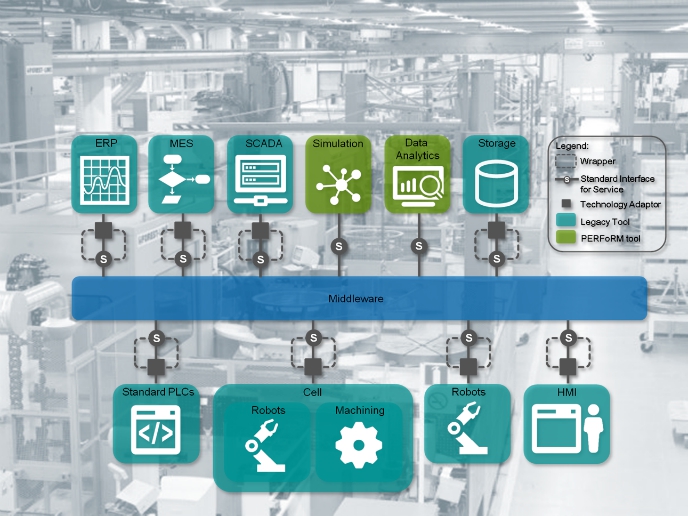Paramount plug-and-produce PERFoRMance
Clients are demanding more customised, cheaper, and higher quality products. To meet these demands, manufacturing companies are seeking innovative developments. In such an environment, there is a constant need to reduce production costs and the presence of delays, shortages of supplement, and resources breakdowns can have a detrimental effect on performance. In addition, companies must react quickly to changes and therefore need to have a highly flexible production. Several research activities have investigated important technologies and standards to alleviate the situation. While there have been promising results, these technologies have not been widely adopted within the sector. Targeting current needs To overcome existing barriers and consolidate research results, the PERFoRM(opens in new window) (Production harmonizEd Reconfiguration of Flexible Robots and Machinery) project worked towards the conceptional transformation of current production systems towards plug-and-produce production systems to achieve flexible manufacturing environments. Michael Gepp, project coordinator explains: “The PERFoRM project aimed to develop a new generation of agile and flexible manufacturing systems based on a plug-and-produce concept to cope with smaller lot sizes and shorter lead time and time-to-market.” The heart of the project was the development of a common reference architecture, which supports flexible CP(P)S, (cyber-physical (production) systems), true plug-and-produce devices (self-contained equipment with dedicated individual control), robots and legacy systems. Within such a system, middleware architecture establishes the communication between humans, machinery and robots. Looking at the results The system architecture including middleware, technology adaptors, tools and services was developed, tested by two testbed facilities and implemented in four industrial use cases at e-District electric vehicle manufacturing, GKN aerospace components, Siemens compressor manufacturing and Whirlpool microwave oven manufacturing. “PERFoRM is paving the way for European companies towards Industry 4.0 and highly-flexible CP(P)S through the common reference system architecture and supporting migration strategy,” says Gepp. Seamless, secure and effective integration of humans into flexible CP(P)S and integration strategies for agent-based technologies into industrial practice were also achieved. Facing hurdles head on The project experienced both data availability and quality issues. “The data of some of the shop floor machines which were used as demonstrators did not have the quality we were expecting,” stresses Gepp. However, after comprehensive consolidation and cleansing of the data, they were able to achieve an acceptable quality for further analyses. Besides the above challenges, the project also found that industrial companies were not as welcoming of agent-based technologies mainly due to a lack of industrial experience. “For instance, Multi-Agent Systems for scheduling are flexible, robust and fault-tolerant but do not guarantee optimal production schedules like conventional approaches,” outlines Gepp. To overcome this, the project developed a hybrid agent-based /optimisation scheduling approach, combining the benefits of optimised conventional scheduling approaches with the reactivity of agent-based elements. What is next for PERFoRM? Besides the application and development of the project’s results by PERFoRM partners within their companies, the extension and dissemination within the manufacturing domain is seen as the next major step for the project. For example, driving standardisation towards an aligned approach for flexible CP(P)S within Europe. The project also hopes to establish a connection with other industry domains and technologies, such as the process industry, in the near future. This has already been planned for upcoming projects, and at the moment, two projects are in the proposal preparation phase.







